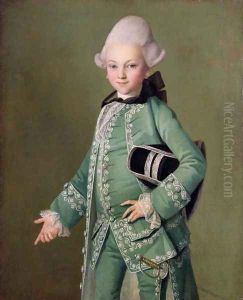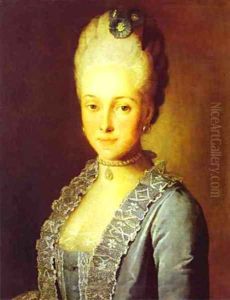Carl-Ludwig Christinek Paintings
Carl-Ludwig Christinek was a German-Russian painter, born in 1732 in Stuttgart, Germany. He was primarily known for his work as a portraitist and his significant influence on Russian art during his period of activity. Christinek's early life and training in the arts took place in Germany, but his career truly flourished after he moved to Russia.
In the mid-1750s, Christinek was invited to Russia by the Imperial Academy of Arts in Saint Petersburg, an institution that played a crucial role in the development of Russian art and was responsible for bringing many Western European artists to the country. Here, he was appointed as a professor of portrait painting, and he quickly became one of the leading painters at the court of Catherine the Great.
Christinek's style was deeply influenced by the European Baroque and Rococo movements, yet he adapted these Western styles to suit Russian tastes and the specific requirements of his patrons. His portraits were characterized by their elegance, clarity, and attention to detail. He was particularly adept at capturing the opulence of the Russian court, with its luxurious fabrics and ornate decorations.
During his career, Christinek painted many important figures of Russian society, including members of the royal family and the nobility. He was instrumental in shaping the Russian approach to portraiture and helped to train a generation of Russian artists. Through his teaching and his art, Christinek left a lasting legacy in Russia, contributing to the gradual emergence of a distinctly Russian style of painting.
Carl-Ludwig Christinek passed away in 1792, but his works continue to be appreciated for their historical value and artistic merit. His portraits offer a unique glimpse into the lives of Russia's elite during the 18th century and remain on display in museums and galleries, including the State Russian Museum and the Hermitage Museum in Saint Petersburg.

